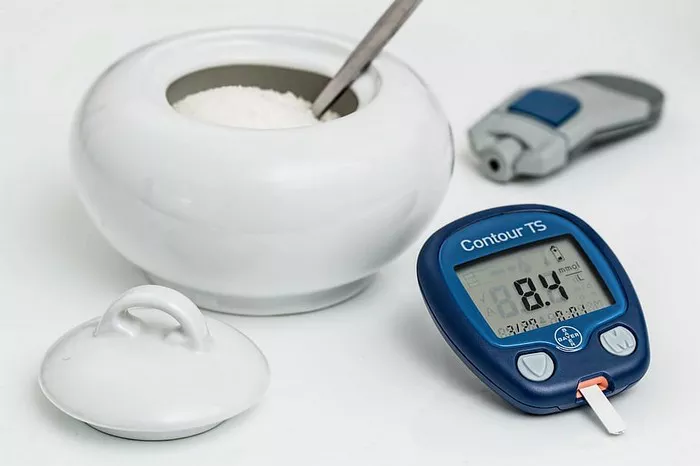Blood glucose monitoring is a crucial aspect of diabetes management, providing valuable insights that inform dietary choices, medication adjustments, and overall health strategies. With advancements in technology, a variety of blood sugar meters, also known as glucometers, have flooded the market. Each device comes with its unique features, benefits, and potential drawbacks. This article aims to guide you through the process of selecting the best blood sugar meter for your needs, considering accuracy, ease of use, cost, and additional features.
Understanding Blood Sugar Meters
Blood sugar meters are handheld devices that measure the concentration of glucose in a drop of blood, typically obtained from a fingertip. These devices are indispensable for individuals with diabetes, as they provide real-time data that helps in managing blood glucose levels effectively.
Types of Blood Sugar Meters
- Basic Meters: These are simple devices that provide quick and accurate readings. They are typically affordable and user-friendly, making them ideal for daily use.
- Continuous Glucose Monitors (CGMs): These advanced systems provide continuous readings of glucose levels throughout the day and night via a sensor inserted under the skin. They are particularly useful for individuals with type 1 diabetes or those who require frequent monitoring.
- Meters with Advanced Features: Some blood sugar meters come with additional functionalities such as Bluetooth connectivity, data storage, and integration with smartphone apps. These features can be beneficial for those who prefer detailed tracking and analysis of their glucose data.
Key Factors to Consider
When selecting a blood sugar meter, several factors should be taken into account to ensure the device meets your specific needs and lifestyle.
Accuracy and Reliability
Accuracy is paramount when it comes to blood sugar meters. The U.S. Food and Drug Administration (FDA) and the International Organization for Standardization (ISO) set standards for the accuracy of these devices. The FDA requires that 95% of glucose meter readings should be within ±15% of the laboratory reference value for blood glucose levels above 75 mg/dL, and within ±20% for values below 75 mg/dL.
It’s important to choose a meter that consistently delivers accurate readings, as even small deviations can significantly impact diabetes management decisions. Checking for FDA or ISO certification can provide assurance of the meter’s accuracy.
Ease of Use
The usability of a blood sugar meter can affect how regularly and effectively it is used. Key aspects of ease of use include:
- Size and Portability: Compact and lightweight meters are convenient for carrying around, especially for those who need to monitor their glucose levels multiple times a day.
- Display and Readability: A large, clear display can make it easier to read the results, which is particularly important for individuals with vision impairments.
- Blood Sample Size: Modern meters require a very small blood sample, often as little as 0.3 to 1.0 microliters. This minimizes discomfort and makes the process quicker and easier.
- Testing Speed: The time it takes for the meter to provide a reading can range from 5 to 15 seconds. Faster meters can make the testing process more efficient.
Cost and Insurance Coverage
The cost of blood sugar meters can vary widely, from affordable basic models to more expensive devices with advanced features. It’s also important to consider the ongoing cost of test strips and lancets, as these can add up over time. Some insurance plans cover the cost of glucose meters and supplies, so it’s advisable to check with your provider to understand what is covered under your plan.
Connectivity and Data Management
For those who prefer to track and analyze their glucose data, meters with connectivity features can be highly beneficial. Bluetooth-enabled meters can sync with smartphone apps, allowing users to log their readings automatically, view trends over time, and share data with their healthcare providers.
Top Blood Sugar Meters in the Market
Based on the above criteria, here are some of the top blood sugar meters available today:
1. Contour Next One
The Contour Next One is renowned for its high accuracy and ease of use. It has a smartLIGHT feature that immediately shows if your reading is within the target range (green), above it (red), or below it (yellow). This visual cue can be very helpful for quick interpretation of results.
- Accuracy: The Contour Next One exceeds FDA and ISO standards for accuracy.
- Ease of Use: It requires a small blood sample and delivers results in 5 seconds. The display is clear, and the device is compact and portable.
- Cost: The meter itself is reasonably priced, though the cost of test strips can be moderate to high.
- Connectivity: It has Bluetooth connectivity and works with the Contour Diabetes app, which offers detailed data tracking and trend analysis.
2. Accu-Chek Guide
The Accu-Chek Guide is another top choice, known for its accuracy and user-friendly design. It features an innovative spill-resistant test strip vial and a strip ejector to make handling test strips easier and more hygienic.
- Accuracy: It meets and exceeds industry standards for accuracy.
- Ease of Use: The device has a backlit display and a strip port light for testing in low light conditions. It requires a small blood sample and provides results in 5 seconds.
- Cost: The Accu-Chek Guide is moderately priced, and the test strips are relatively affordable.
- Connectivity: It connects to the mySugr app via Bluetooth, enabling comprehensive data management.
3. OneTouch Verio Reflect
The OneTouch Verio Reflect stands out with its personalized insights and detailed tracking features. It provides Blood Sugar Mentor messages that offer feedback on your readings and trends.
- Accuracy: The Verio Reflect meets rigorous accuracy standards.
- Ease of Use: It has a color touchscreen and provides results in 5 seconds. The device requires a small blood sample and offers a pre-meal and post-meal marker for better glucose tracking.
- Cost: The meter and test strips are competitively priced.
- Connectivity: It has Bluetooth connectivity and works with the OneTouch Reveal app, which helps users visualize their glucose data and trends.
4. FreeStyle Libre 2
The FreeStyle Libre 2 is a CGM system that offers continuous monitoring without the need for routine finger pricks. It is particularly beneficial for individuals who require frequent glucose monitoring.
- Accuracy: The FreeStyle Libre 2 provides reliable and consistent readings.
- Ease of Use: It features a sensor that is worn on the back of the upper arm and can be scanned to get real-time glucose readings. The sensor lasts for up to 14 days.
- Cost: The initial cost is higher due to the sensor, but it eliminates the need for daily test strips and lancets.
- Connectivity: It integrates with the FreeStyle LibreLink app, allowing for comprehensive data management and sharing with healthcare providers.
Continuous Glucose Monitoring (CGM) Systems
CGM systems represent a significant advancement in diabetes management, offering several advantages over traditional blood sugar meters. They provide continuous, real-time glucose readings, which can be particularly useful for individuals with type 1 diabetes or those with type 2 diabetes who require intensive monitoring.
Benefits of CGM Systems
- Real-Time Monitoring: CGM systems provide continuous glucose readings, alerting users to fluctuations that might not be detected with periodic finger pricks.
- Trend Analysis: By continuously monitoring glucose levels, CGM systems offer valuable insights into trends and patterns, helping users make more informed decisions about their diabetes management.
- Alerts and Alarms: Many CGM systems come with customizable alerts that notify users of high or low glucose levels, providing an added layer of safety.
- Reduced Finger Pricks: While some finger pricks are still necessary, CGM systems significantly reduce the need for daily testing.
Leading CGM Systems
- Dexcom G6
- Accuracy: The Dexcom G6 is known for its high accuracy and reliability.
- Ease of Use: It features a sensor that lasts for 10 days and does not require fingerstick calibration.
- Connectivity: It integrates with multiple devices and apps, including Apple Health, Google Fit, and various insulin pumps.
- Cost: The initial and ongoing costs can be higher, but many insurance plans offer coverage.
- Medtronic Guardian Connect
- Accuracy: The Guardian Connect provides accurate and consistent readings.
- Ease of Use: It features a 7-day sensor and customizable alerts for high and low glucose levels.
- Connectivity: It works with the Guardian Connect app, providing detailed glucose data and trends.
- Cost: Similar to other CGM systems, the cost can be substantial, but insurance coverage is often available.
- Eversense CGM
- Accuracy: The Eversense CGM offers reliable glucose readings.
- Ease of Use: It features a long-term sensor that lasts up to 90 days, reducing the need for frequent sensor replacements.
- Connectivity: It integrates with the Eversense app for comprehensive glucose data tracking.
- Cost: The upfront cost is higher due to the long-term sensor, but it reduces the frequency of replacements.
The Future of Blood Glucose Monitoring
The field of blood glucose monitoring continues to evolve, with ongoing research and development aimed at improving accuracy, ease of use, and integration with other health technologies. Some emerging trends and innovations include:
Non-Invasive Glucose Monitoring
Research is being conducted into non-invasive glucose monitoring methods that do not require blood samples. These technologies, such as optical sensors that measure glucose levels through the skin, could revolutionize diabetes management by providing a painless and convenient way to monitor blood sugar levels.
Artificial Intelligence and Machine Learning
AI and machine learning are being used to analyze glucose data and provide personalized insights and predictions. These technologies can help users understand how various factors, such as diet, exercise, and medication, affect their glucose levels, enabling more precise and individualized diabetes management.
Integration with Wearable Devices
The integration of glucose monitoring with wearable devices, such as smartwatches and fitness trackers, is becoming increasingly common. This allows users to continuously monitor their glucose levels alongside other health metrics, providing a more holistic view of their health.
Conclusion
Choosing the best blood sugar meter depends on a variety of factors, including accuracy, ease of use, cost, and additional features. While traditional blood sugar meters are sufficient for many individuals, CGM systems offer advanced monitoring capabilities that can significantly enhance diabetes management.
The Contour Next One, Accu-Chek Guide, OneTouch Verio Reflect, and FreeStyle Libre 2 are among the top choices for blood sugar meters, each offering unique features that cater to different needs. CGM systems like the Dexcom G6, Medtronic Guardian Connect, and Eversense CGM provide continuous monitoring and valuable insights for those requiring intensive glucose management.
As technology continues to advance, the future of blood glucose monitoring looks promising, with non-invasive methods, AI integration, and wearable devices paving the way for more effective and convenient diabetes management solutions. By staying informed about the latest developments and choosing the right device for their needs, individuals with diabetes can achieve better control over their condition and improve their quality of life.
Related topics:
Do Any Smart Watches Measure Blood Sugar?
























